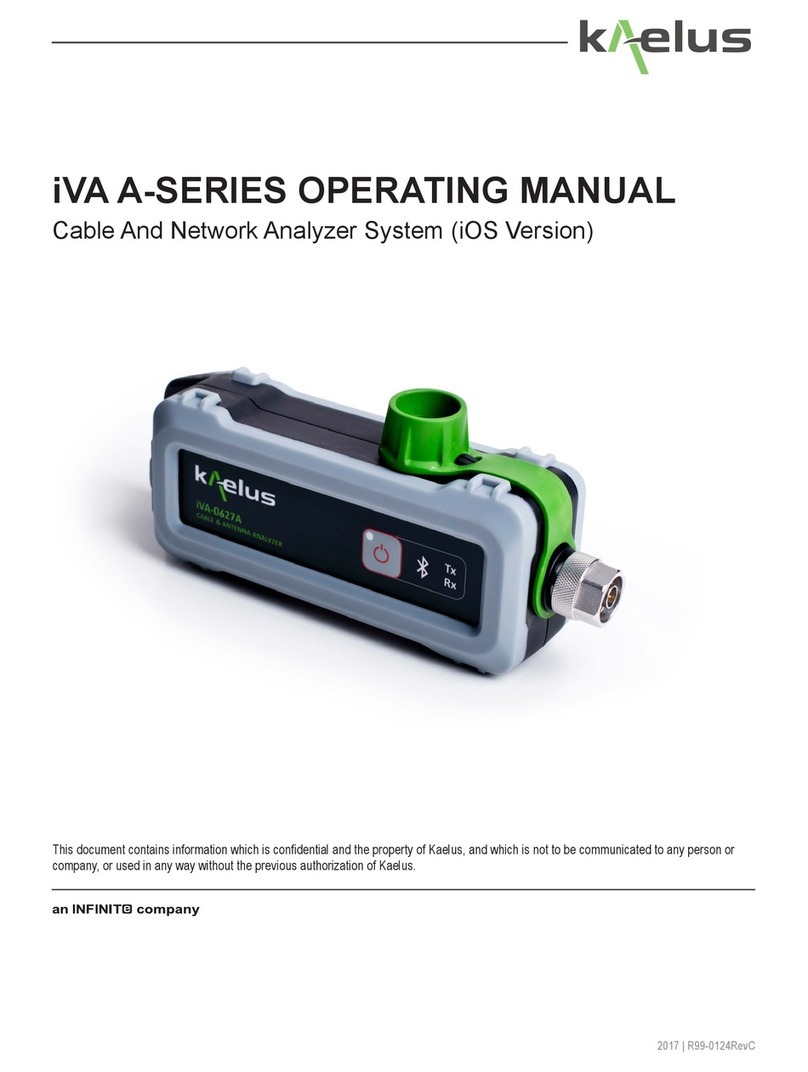
© 2022 Kaelus. All Rights Reserved.
www.kaelus.com
Page 3 of 19
1 General
1.1 Purpose
As the complexity of the cellular base station increases with the deployment of new frequency bands,
a new type of PIM issue is arising: PIM sources external to the antenna systems can now become
problematic, in particular when low order PIM products (IM2, IM3, IM4 and IM5) are susceptible to
falling in the receiver frequency bands.
External PIM sources are generally poor metal to metal contacts exacerbated by long exposure
times to the weather.
This document describes the Method Of Procedure (MOP) for performing external PIM finding using
the 1-port PIM Finder Solution from Kaelus. The MOP focuses on standard equipment setup and
process to be followed for a successful mitigation of external PIM.
1.2 Scope
This document provides a step by step process to efficiently locate PIM external to an antenna
system.
1.3 Audience
This document is intended for the installer and technician of cellular sites to guide them through the
trouble shooting process of PIM mitigation.
1.4 RF Safety
WARNING! The radio frequency fields near cellular antennas may exceed safe levels
for human exposure. Personnel engaged in troubleshooting external PIM sources
should be trained for work in radio frequency environments and use a personal RF
monitor if working near active antennas.
The PIM test equipment is capable of producing up to 80 Watts pulsed (10% duty cycle) of radio
frequency (RF) power in the 600 MHz to 2600 MHz frequency band. Users are reminded that proper
precautions must be taken to minimize exposure to these RF fields to the recommended limits.
Please pay particular care to the following areas:
•Always turn off the RF power whenever a test is not being conducted;
•Switch off the RF power from the test equipment before removing or connecting the cables to the test
port. Burns to fingers and permanent damage to eyes can result from exposure to connectors carrying
high levels of RF power;
•Always terminate the output port of the test equipment into a load, a loaded line or a line that will
radiate the energy to free space before turning on the RF power;
•Ensure that any antennas being tested are placed so that no personnel are exposed to RF field levels
in excess of the maximum exposure limits
Also, the unit should be operated by a suitably qualified operator in order to ensure interference is
not caused to other spectrum users.
Please refer to the ICNIRP (ICNIRP | Base Stations)and the local RF Exposure and Safety
instructions for further guidelines.































